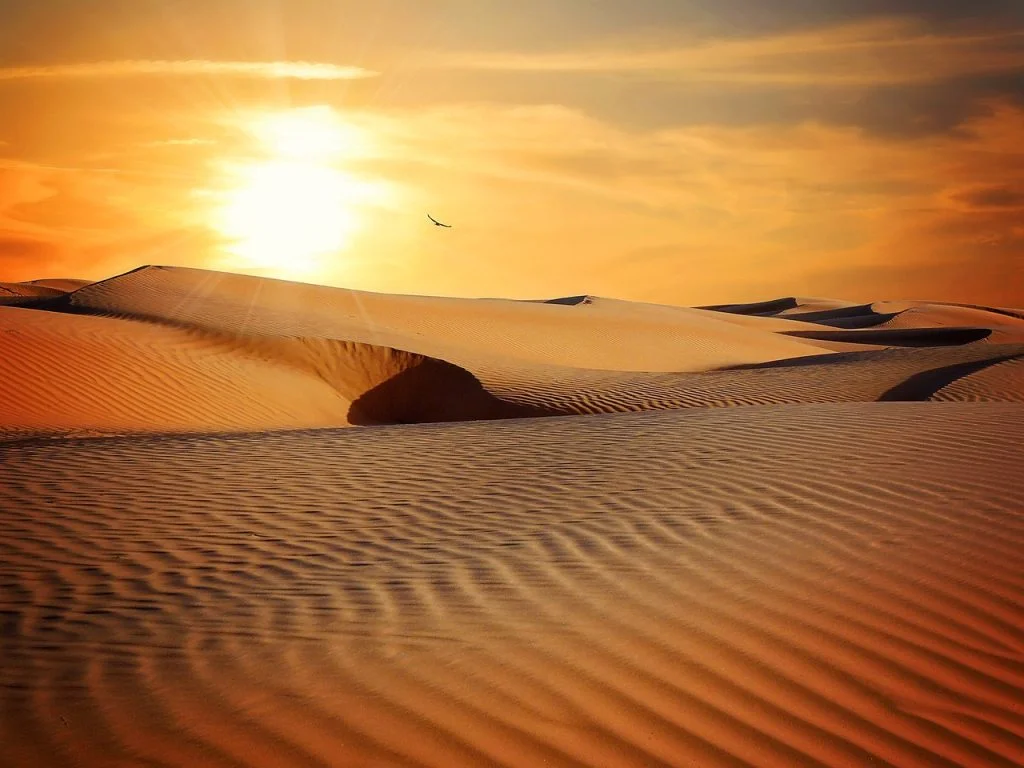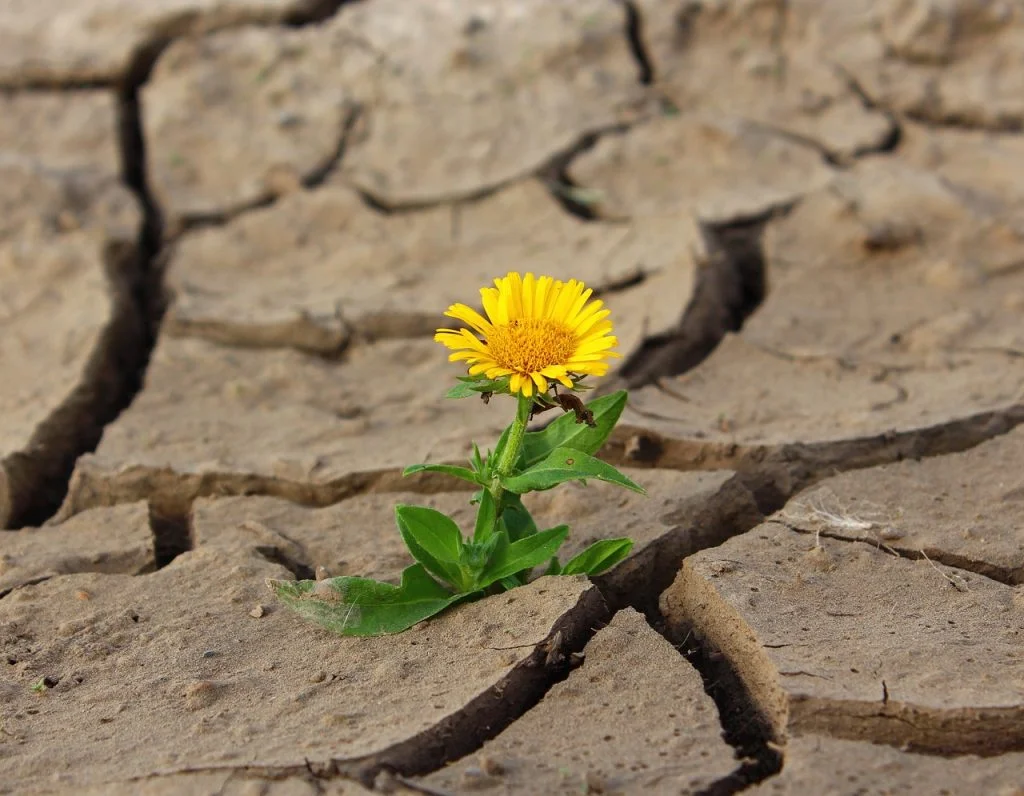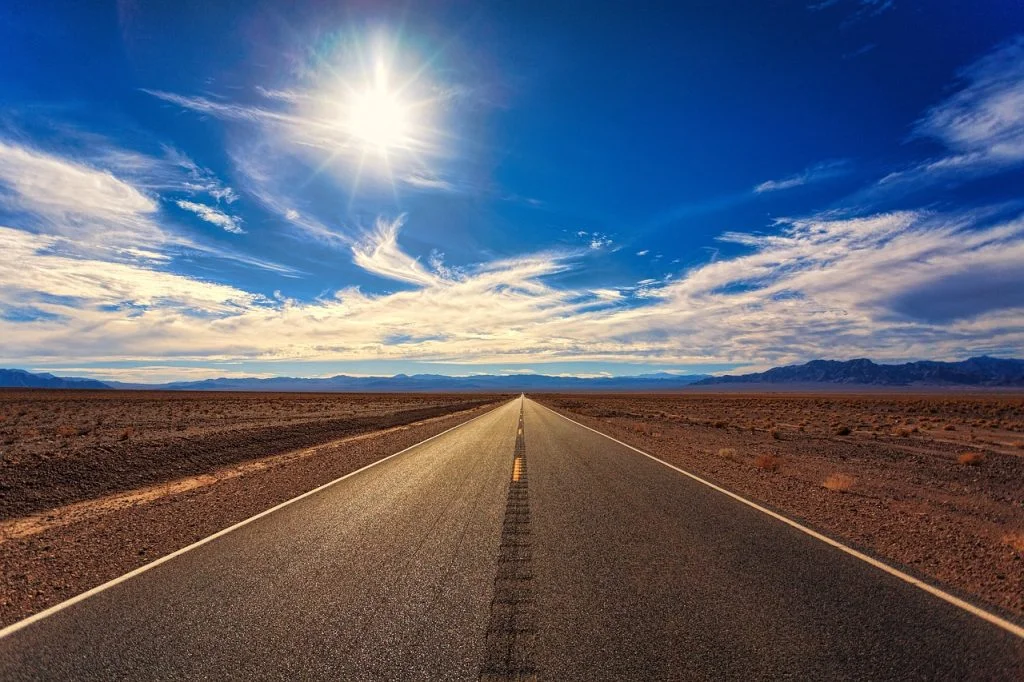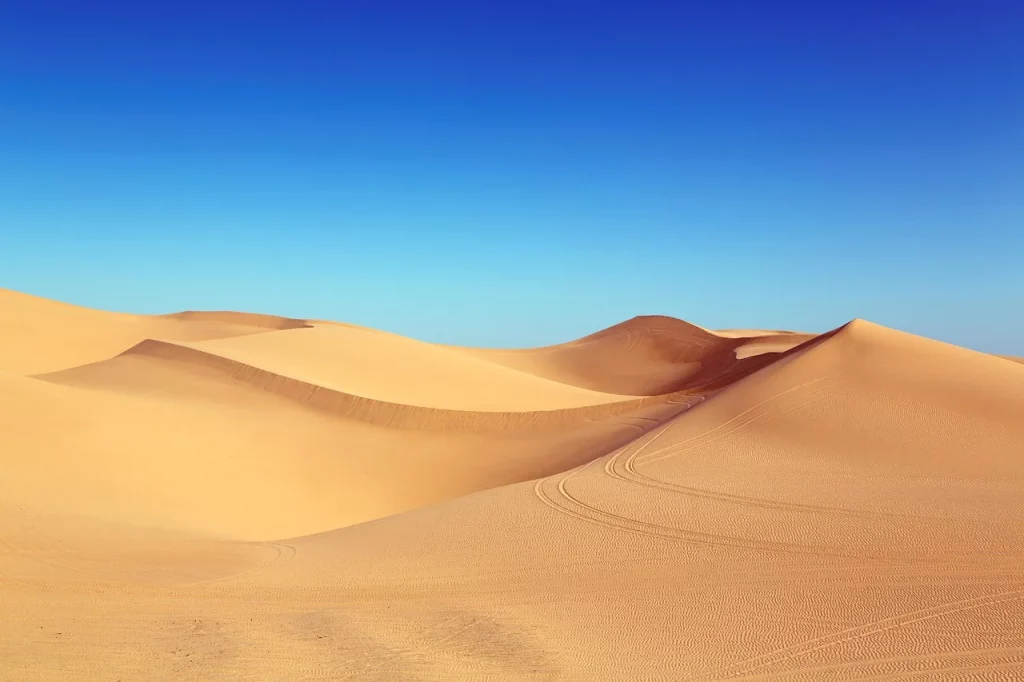There I was, lost in the Death Valley, with nothing but a compass and curiosity. My expeditions through various deserts have taught me more than just how to dance in a sandstorm (pro tip: don’t). These sandy wonders are not just about scorching heat and mirages; they’re treasure troves of secrets and surprises.
As your guide through the sandy realms, I’ve compiled some facts that are as intriguing as finding ice in the Sahara. And speaking of ice, wait till you reach fact number 36—it’s a frosty (or not) surprise in a place you’d least expect!
The desert is natural. When you are out there, you can get in tune with your environment, something you lose when you live in the city.
Robbie Robertson
Deserts Facts
Embark on a journey through the vast and mysterious lands. Discover incredible facts about deserts, and keep in mind that a quiz at the article’s end will challenge your desert wisdom!
- The Sahara is the largest hot desert in the world, covering approximately 9 million square kilometers.
- Deserts are not always hot; Antarctica is a cold desert.
- Less than 10 inches of rainfall annually classifies a region as a desert.
- Desertification is a process where fertile land becomes desert, often due to drought, deforestation, or inappropriate agriculture.
- The Gobi Desert in Asia is known for its extreme temperatures, both hot and cold.
- Cacti, a common desert plant, have thick flesh to store water and spines for protection.
- Camels are well adapted to desert life, with their humps storing fat, not water.
- The Namib Desert has some of the highest sand dunes in the world.
- Deserts are often rich in minerals that were left behind after ancient lakes evaporated.
- The Atacama Desert is one of the driest places on Earth, with some areas receiving almost no rainfall.
- Nocturnal animals are common in deserts to avoid daytime heat.
- Desert soil is often sandy and rocky, making it less suitable for agriculture.
- Flash floods can occur in deserts due to the hard ground and lack of vegetation.

- The Colorado Plateau desert in the U.S. is known for its striking rock formations.
- Oasis is a fertile area in a desert where water is found.
- Wind erosion is a significant shaping force in desert landscapes.
- The Sonoran Desert is home to the saguaro cactus, which can live for over 150 years.
- Desert varnish is a dark coating found on rocks in arid areas, created by microbial processes.
- Deserts can be found on every continent, including small parts of Europe.
- The Mojave Desert is the smallest and driest desert in North America.
- Desert plants often have deep roots to reach underground water.
- Desert animals have adaptations like burrowing and nocturnal habits to survive harsh conditions.
- The Thar Desert, also known as the Great Indian Desert, is densely populated compared to other deserts.
- Deserts can have significant temperature variations between day and night.
- Sand dunes can move over time due to wind patterns.
- The Great Basin Desert is the largest U.S. desert, located between the Sierra Nevada and the Wasatch Range.
- Desert ecosystems are often fragile and sensitive to human impact.
- Rock art and ancient structures are often well-preserved in desert climates.

- Many deserts were once seas or lakes that have dried up over millennia.
- The Arabian Desert is home to the Rub’ al Khali, one of the largest sand deserts in the world.
- Desert lizards often have adaptations like long legs to avoid hot sand.
- Mirages in deserts are caused by light bending due to temperature gradients in the air.
- Creosote bush, common in North American deserts, can live for thousands of years.
- Desertification affects over 1 billion people globally by reducing land productivity.
- Deserts have unique wind patterns that can create features like ventifacts and yardangs.
- Death Valley, in the Mojave Desert, recorded one of the highest temperatures on Earth.
- Some desert plants have a short life cycle to take advantage of rare rainfall.
- Salt flats or playas are flat areas where salt accumulates after water evaporates.
- Deserts often have high mineral content in their soils, including gypsum and sodium nitrate.

- The Patagonian Desert in South America is primarily a cold desert.
- Many deserts are at high altitudes, like the Puna de Atacama in the Andes.
- Fog deserts receive moisture primarily from fog, like the Namib Desert.
- Desert biomes cover about one-fifth of the Earth’s surface.
- Solar power is increasingly harnessed in deserts, utilizing the abundant sunshine.
- Animals like the fennec fox have large ears for dissipating heat.
- Mediterranean deserts have wet winters and dry summers, unlike most other deserts.
- Many ancient civilizations thrived in desert regions, like the Egyptians in the Sahara.
- Joshua trees, symbolic of the Mojave Desert, are actually a type of yucca.
- Desert tourism is popular but can pose challenges to preserving delicate environments.
- Dust storms, common in deserts, can have significant environmental impacts.
Deserts Myths

Now that you are wiser with all these facts, it’s time to separate some common myths from the truth.
- Deserts are Always Hot
While many people picture scorching heat when they think of deserts, this isn’t always the case. Deserts are primarily defined by their low precipitation, not their temperature. For instance, the Antarctic Desert is actually the largest desert in the world and it’s freezing cold! - Deserts are Barren Wastelands
Despite their harsh conditions, deserts are home to a diverse range of life. Plants and animals in these areas have adapted in remarkable ways to survive with limited water. From cacti storing water in their thick stems to nocturnal animals avoiding the daytime heat, deserts are far from lifeless. - Deserts Are All Sandy
When we think of deserts, we often imagine vast dunes of sand. However, many deserts are rocky, covered in gravel, or salt flats. The Sahara, known for its iconic sand dunes, actually has large areas of gravel plains and rocky regions. - It Never Rains in the Desert
Deserts do get rain, just not very much. Some deserts can go for years without rain, but when it does rain, it can be quite intense. These rare rainfalls are crucial for supporting the life cycles of desert plants and animals. - Deserts Are Useless for Humans
Deserts have a lot to offer, from solar energy potential due to their abundant sunlight to unique medicinal plants. Many desert regions are also rich in minerals. Plus, they’re important for biodiversity and have cultural significance for the people who live there. Deserts are far from useless; they’re full of potential!
No products found.
Deserts Quotes

Through the ages, many notable figures left their quotes about the deserts. Here are five of my favorites:
In the desert, there is no sign that says, Thou shalt not eat stones.
Sufi mystic Rumi
This quote by Sufi mystic Rumi highlights the absurdity of unnecessary rules by using the stark and rule-less landscape of a desert as a metaphor.
What makes the desert beautiful is that somewhere it hides a well.
Antoine de Saint-Exupéry
Antoine de Saint-Exupéry, in this quote from “The Little Prince,” reflects on the beauty and mystery of deserts, suggesting that their value lies in their hidden resources.
The desert tells a different story every time one ventures on it.
Robert Edison Fulton Jr
Robert Edison Fulton Jr. captures the ever-changing and personal nature of experiences one has in the desert.
Deserts are the lungs of the Earth.
Thomas Browne
This quote by Thomas Browne speaks to the ecological importance of deserts, likening them to vital organs of the planet.
A rose in a desert can only survive on its strength, not its beauty.
Matshona Dhliwayo
This quote by Matshona Dhliwayo emphasizes the idea of resilience and inner strength, using the metaphor of a rose thriving in the harsh conditions of a desert.
Deserts FAQ

You’ve traversed the desert of quotes; now prepare to quench your thirst for knowledge in this FAQ oasis. Read with care, because all this information is the compass to navigate you through the quiz that awaits on the next horizon.
- Can Deserts be Cold?
Yes, deserts can be cold! While many people associate deserts with scorching heat, cold deserts also exist. These are often found at higher latitudes or elevations and experience low precipitation like their hot counterparts. They can have snow and ice, and temperatures can drop significantly, especially at night. - How are Deserts Formed?
Deserts are formed due to a variety of factors, including geographic location, prevailing wind patterns, and the presence of mountain ranges. Areas that receive less than 250 millimeters of rain annually are typically classified as deserts. These conditions can be created by rain shadows, where mountains block rain-bearing winds, or by distance from moisture sources like oceans. - What is the Largest Desert in the World?
The largest desert in the world is Antarctica. Contrary to popular belief, deserts are not defined by heat but by low precipitation. Antarctica is technically a desert because it receives only about 200 mm of precipitation per year, mostly in the form of snow. - Can Plants and Animals Survive in the Desert?
Yes, a wide variety of plants and animals have adapted to survive in desert environments. These organisms have evolved special adaptations to deal with extreme temperatures and water scarcity. For example, cacti store water in their thick stems, while some desert animals are nocturnal to avoid daytime heat. - Are there any Deserts in Europe?
Europe doesn’t have vast deserts like the Sahara or the Gobi. However, there are semi-arid areas with desert-like conditions. For example, the Tabernas Desert in Spain is often considered Europe’s only true desert. It features arid landscapes and has even been used as a filming location for Western films.
No products found.
Deserts Quiz

Welcome to the Great Desert Quiz, where your knowledge is drier than the Sahara! Get ready, because if you miss a question, you might just find yourself buried in a sand dune of confusion!
Conclusion
As we wrap up our dune-filled journey, let’s not forget that deserts are more than just vast expanses of sand and the occasional thirsty camel. They’re nature’s own spicy challenge to life, offering extreme temperatures and minimalist decor long before it was trendy.
Remember, the next time you feel the urge to complain about a hot day, somewhere in the desert, a cactus is silently judging you. A question: If you were a desert animal, which one would you be? A resourceful fox, a chilled-out tortoise, or the mysterious night owl? Let me know in the comments.
4 Sources Used For This ArticleDeserts – Geo Libre Texts
Desert Ecosystems – Ed Zoo Cating
Desert Facts – Kids World Travel Guide


